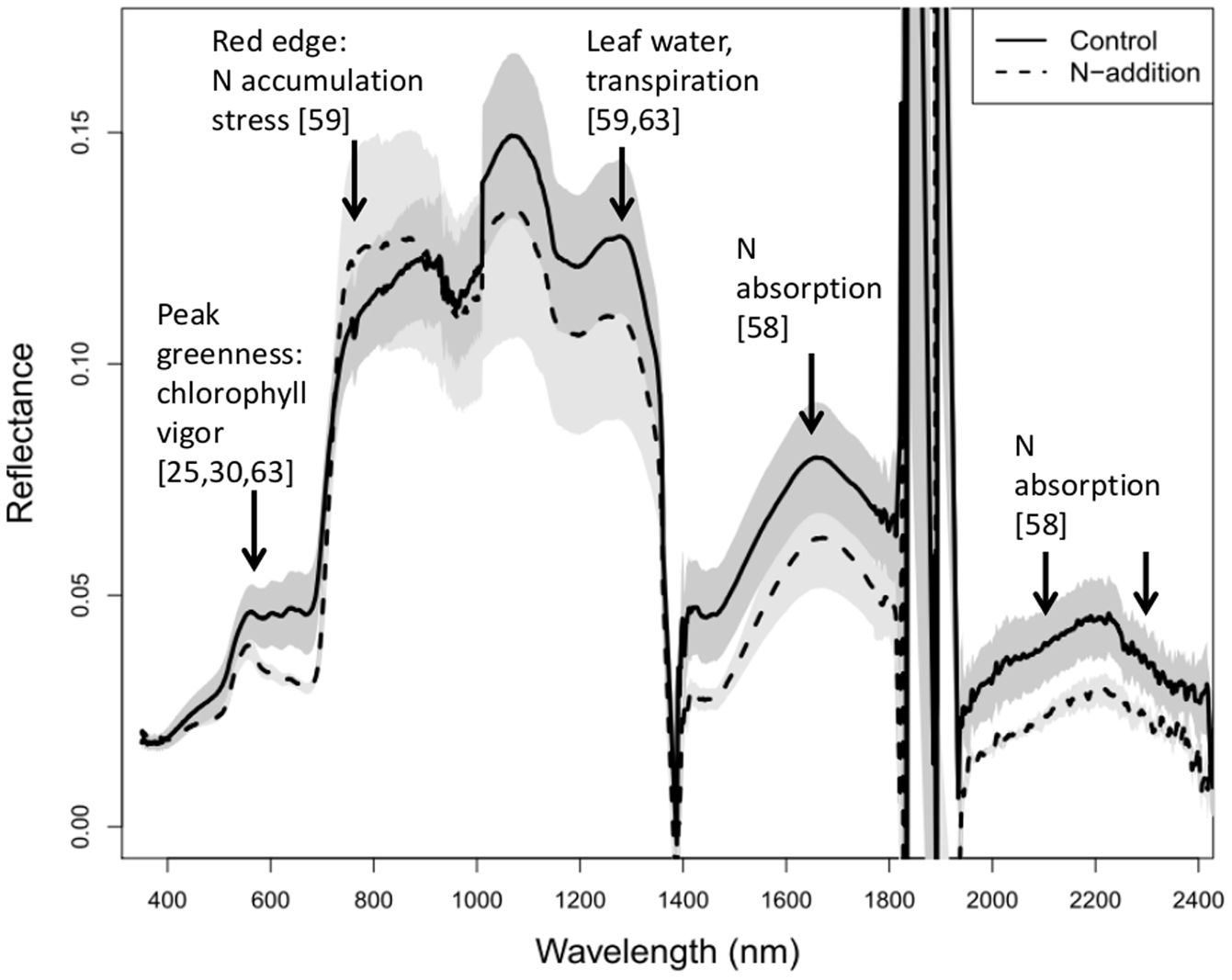Coastal marshes depend on belowground biomass of roots and rhizomes to contribute to peat and soil organic carbon, accrete soil, and alleviate flooding as sea level rises. Within a freshwater wetland impoundment receiving minimal sediments, we used experimental plots to explore growth models for a common freshwater macrophyte, Schoenoplectus acutus (S. acutus). We used nitrogen (N)-addition and control plots (4 each) to test whether remotely sensed vegetation indices could predict leaf N concentration, root:shoot ratios, and belowground biomass of S. acutus. Following 5 months of summer growth, we harvested whole plants and measured leaf N and total plant biomass of all above and belowground vegetation. Prior to harvest, we simulated measurements of plant spectral reflectance over 164 hyperspectral Hyperion satellite bands (350–2500 nm) using a portable spectroradiometer. N-addition did not alter whole plant but reduced belowground biomass 36% and increased aboveground biomass 71%. We correlated leaf N concentration with known N-related spectral regions using all possible normalized difference (ND), simple band ratio (SR), and first order derivative ND (FDN) and SR (FDS) vegetation indices. FDN1235, 549 was most strongly correlated with leaf N concentration and was related to belowground biomass, the first demonstration of spectral indices and belowground biomass relationships. Leaf N vegetation indices should aid in scaling-up field estimates of biomass and assist regional monitoring.
O'Connell, Byrd and Kelly. 2014. PLoS One 9(3): e90870
http://www.plosone.org/article/info%3Adoi%2F10.1371%2Fjournal.pone.0090870

Reflectance spectra for treatments. Averaged reflectance spectrum for N-addition and control plants (N = 4 each). The shaded grey areas represent ± one standard error.

